Section 3 | Porcine Respiratory Disease
Industry
Page 14 /
Prevention of PRD
Given the multifactorial nature of the condition, preventing porcine respiratory disease (PRD) can feel like a difficult task. You need to look at the herd as a whole and focus on all the known risk factors present in your herd.
Knowing Your Herd
The first step in preventing PRD in your herd is gaining a full understanding of the risk factors and pathogen pressures your animals are facing. To do this, it is very helpful to adopt a team approach to herd health. Everyone involved in the health and productivity of the herd should be involved — animal care personnel, farm management, animal health technicians, herd veterinarian(s), your nutritionist. Not only are you bringing in a variety of expert knowledge, but you’re also bringing in different perspectives on the health and productivity issues in the herd.
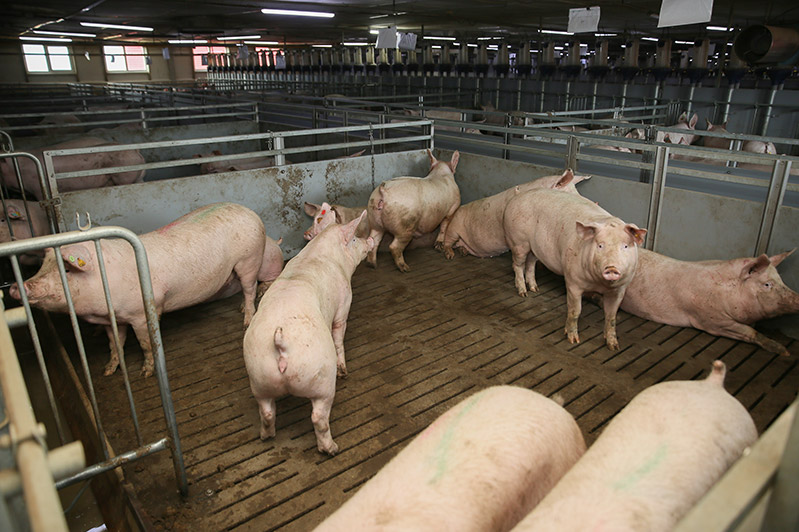
For instance:
- Animal care personnel are experts on the daily health challenges of the herd. They can also give a valuable perspective on adapting any recommendations to the unique management of the herd
- Farm management should have a good understanding of health and disease impacts on the herd as a whole. They add perspective to the broader picture of the economics of the herd and are the leaders tasked with implementing health recommendations
- Herd veterinarians have advanced training in epidemiology, preventative medicine, pathology, and immunology. They also work with a variety of producers and have the perspective and experience of implementing health recommendations in a variety of herd scenarios
- Nutritionists are experts in feedstuff evaluation and ration formulation. Like veterinarians, they too have the perspective of what works and what doesn’t on a variety of herds
Assessing Risk
It is important that you keep excellent health and production records for your herd. These records will help your herd advisors understand the disease challenges your animals are facing. Questions such as the “who, what, when, where, and why” of disease are better understood when your records are accurate. Good records help you set goals for improvement and measure the impact(s) of any management change you make on the farm.
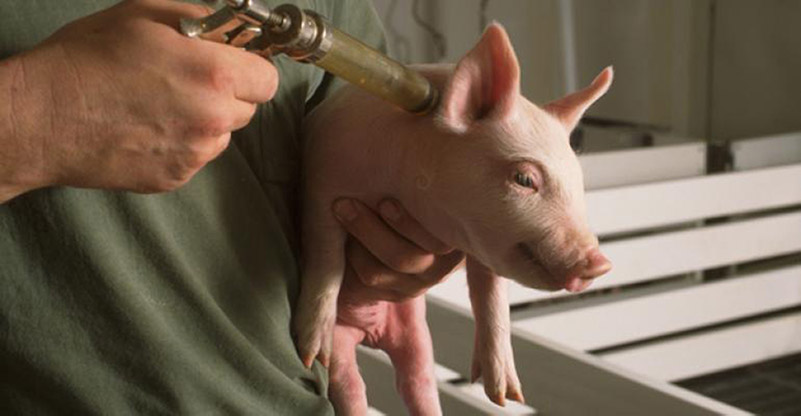
Source: National Hog Farmer
Look and See
In order to assess PRD risk on your farm, your advisors should have intimate knowledge of your operation — management, environmental conditions, biosecurity practices, cleaning protocols, stocking densities, pig flow, etc. This knowledge is only obtained through routine herd visits and a keen eye for detail. Your veterinarian can assess clinically ill animals and recommend the appropriate diagnostic and treatment path to take. Your nutritionist can evaluate the way rations are impacting growth and productivity.
Test, Test, Test
It is impossible to know what pathogens are causing issues on your farm unless you are routinely conducting routine post mortems and laboratory testing. The health status of the animals on your farm could change over time, making it important to monitor the pathogen profile on a regular basis. This way, there are no surprises and you have a fuller understanding of your disease profile. Armed with this information, you can tailor preventative practices to focus on specific diseases (e.g. vaccines, management changes, treatment protocols etc.).
Preventative Practices for PRD
Now that you’ve devoted effort towards understanding PRD on your farm, you can focus on those management practices geared towards reducing risk. It may not be possible to completely eliminate PRD, but you can certainly reduce your risk.
Biosecurity
Any discussion of disease prevention in your herd always starts with a focus on excellent biosecurity practices. The biosecurity portion of this FAAST Review outlines some key principles around preventing the introduction and spread of infectious disease in your herd.
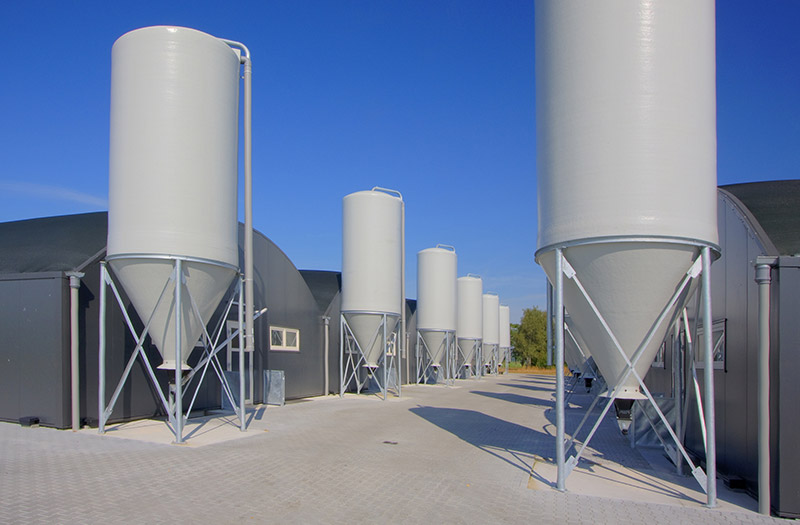
Ventilation and Respiratory Disease
There are several reasons why excellent ventilation plays a major role in pig health.
Optimal ventilation has several positive benefits:
- Reduces heat stress in the warm weather
- Minimizes humidity levels in the barn
- Ensures a constant supply of clean air is provided
- Reduces airborne bacteria and viruses, noxious gases, and particulate matter that can contribute to PRD
- It improves animal comfort and reduces stress, thereby minimizing adverse effects on the immune system
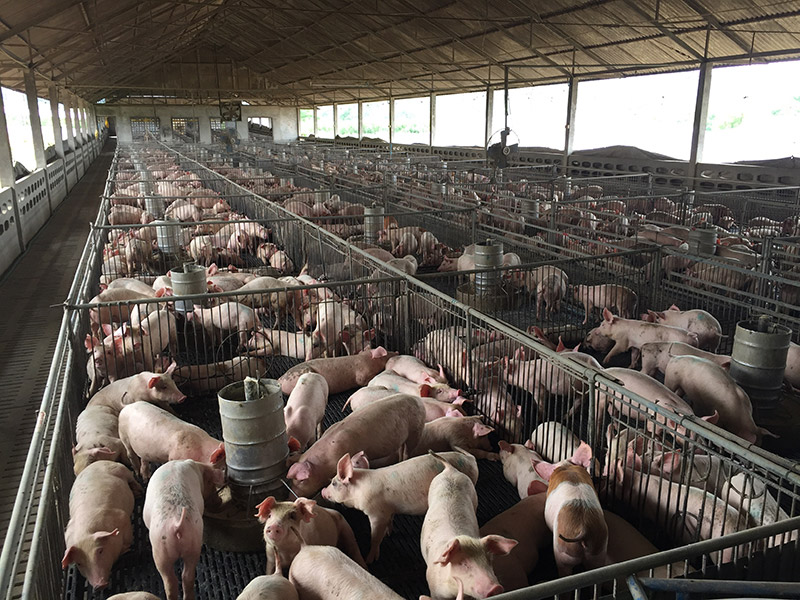
There are a variety of resources on the internet with excellent guidelines on how to construct, operate, and maintain the ventilation system of your operation:
Ontario Ministry of Agriculture, Food, and Rural Affairs (OMAFRA): Air Quality in Livestock Operations
- Good background information on the various compounds that can affect air quality and animal health in the barn
OMAFRA: How to Avoid Production Losses in Swine Due to Heat Stress
- An excellent overview of the important aspects of heat stress in the swineherd and practical guidelines on how to combat it with ventilation
The Pig Site: Ventilation
- A high-level overview of temperature control through ventilation, along with some system maintenance recommendations
Harry Huffman, Huffman Engineering: Effective Ventilation
- Review of some common ventilation mistakes in swine barns
Michigan State University: Types of Barn Ventilation Systems
- Quick overview of the different types of ventilation systems that can be employed in swine production
Iowa State Extension: Mechanical Ventilation Design Worksheet for Swine Housing
- Recommended ventilation rates based on season and production stage, as well as important calculations for fan size, number, etc.
All In, All Out (AIAO)
One of the most successful management practices associated with reducing disease in your herd could be practicing AIAO management. While this is included in the biosecurity module, the importance of ensuring that the cycle of disease transmission is broken via AIAO management needs to be stressed. By managing pigs as a group of similar individuals — age, weight, stage of production, condition — you aren’t mixing them as often. Every time you mix pigs, especially pigs of different ages, you could be exposing them to infectious pathogens they haven’t seen before (and therefore are not immune to). This could cause disease in both the pigs being mixed, as well as the group that is receiving the pigs.
The Pig Site has an excellent resource on how you can practically schedule AIAO management on your farm.
Some of the benefits of AIAO production include:
- Lower disease
- Better performance
- Easier recordkeeping
- Improved environmental control
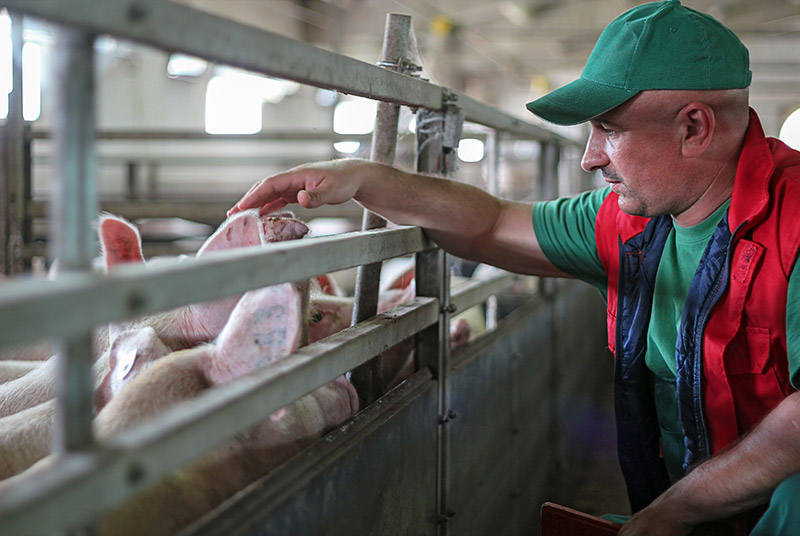
Focus on Stocking Density
Stocking density can have a big impact on PRD in your pigs for several reasons:
More pigs per square foot = more manure per square foot
- Higher manure levels can cause an increase in noxious gasses that may irritate the respiratory system and predispose to respiratory disease
- Adequate ventilation can help to remove these noxious gasses, but if levels are too high, systems can be overwhelmed
More animal-animal contact
- Disease transmission is dependant on the frequency of contact, of adequate duration, between susceptible individuals in a population
- The more pigs in a given space, the more contacts they will have, facilitating the spread of disease
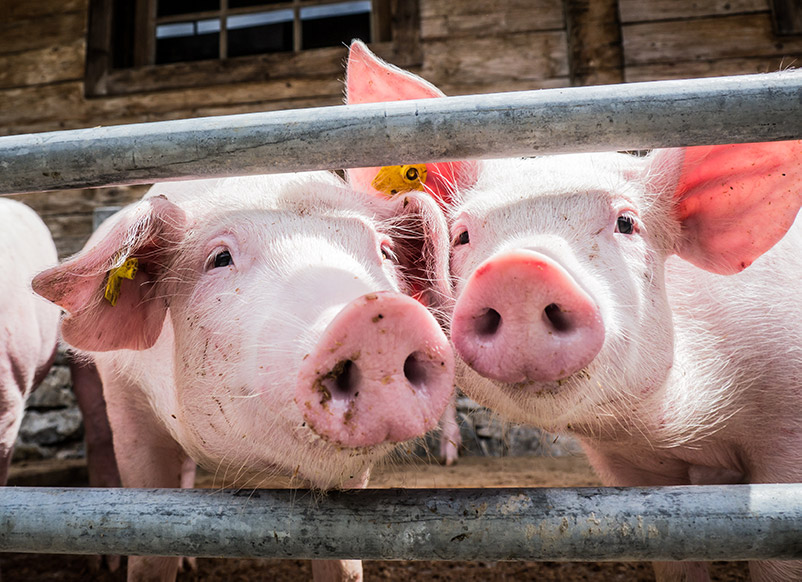
Higher stocking densities = more competition for resources
- Perhaps one of the biggest negatives of stocking pigs too densely is that you really exacerbate the difference between the winners and losers
- Pigs will compete for food and water, with the more dominant pigs gaining a disproportionate share of the resources
- More antagonistic interactions resulting in injuries and lower group-level production
- More competition is also quite stressful, and as we know stress can inhibit the immune system and increase susceptibility to disease. It can also decrease the effectiveness of the immune response to vaccination

In terms of stocking density, the Code of Practice for the Handling and Care of Pigs requires that:
For Sows:
- “All group-housed sows must be able to stand, move about and lie down without interference with each other in a way that compromises welfare, and space must be provided for separation of dunging from lying and eating areas.”
For Weaned/Grower/Finisher Pig:
- “Pigs must be housed at a space allowance of k ≥0.0335. Floor space allowance is expressed using a k-value, which, when multiplied by a pig’s body weight (kg) 0.667, gives the floor surface area in m2. The optimal k-value may change according to temperature, type of flooring and group size.”
When a short-term decrease in space allowance is needed at the end of the production phase:
- “A decrease of up to 15% for nursery pigs and up to 10% for grower/finisher pigs is allowed
- A decrease of up to 20% for nursery pigs and up to 15% for grower/finisher pigs is allowed only if it is demonstrated that the higher densities do not compromise the welfare of the animals as determined by average daily gain, mortality, morbidity and treatment records, as well as the absence of or no increase in vices such as tail-biting.”
Taking these requirements further, specific space requirements are outlined in the appendix of the Code that take into account the size, sex, and stage of production of the animal.
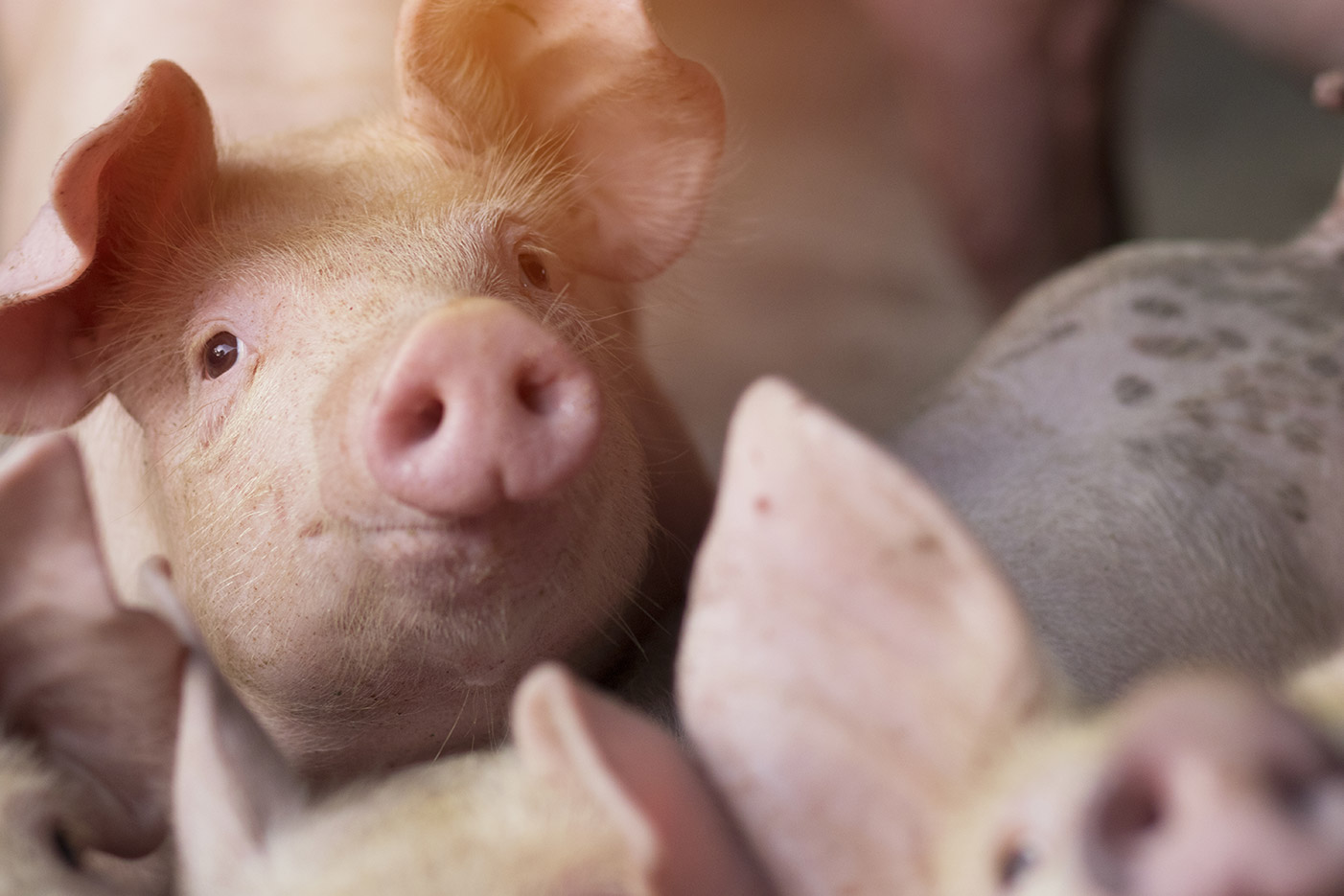
Maintaining Constant Temperature and Humidity
Keep an eye on the temperature and humidity levels in your barn. Wide swings in either parameter can be stressful for pigs, and this stress can compromise their immune systems and increase the risk of PRD. Section 1.4 of the Code of Practice for the Care and Handling of Pigs outlines the optimal temperature ranges for the various stages of pig production. Monitoring and ensuring consistent temperature levels is an essential component to producing healthy, less stressed pigs.
An Effective Vaccination Program
Vaccination is one of the most important components of an effective PRD prevention strategy. We may have everything else right – great ventilation, optimal stocking densities, AIAO, the best biosecurity — but if we have a herd of naive animals (animals that have little immunity to specific diseases), we are leaving the door open for a potentially severe disease outbreak. While not the solution to prevent 100% of the disease challenges your herd may face, vaccination does provide insurance. Should disease hit a population of animals, if they have been properly immunized, the illness is normally less severe, of shorter duration, and affects a lower proportion of the population.
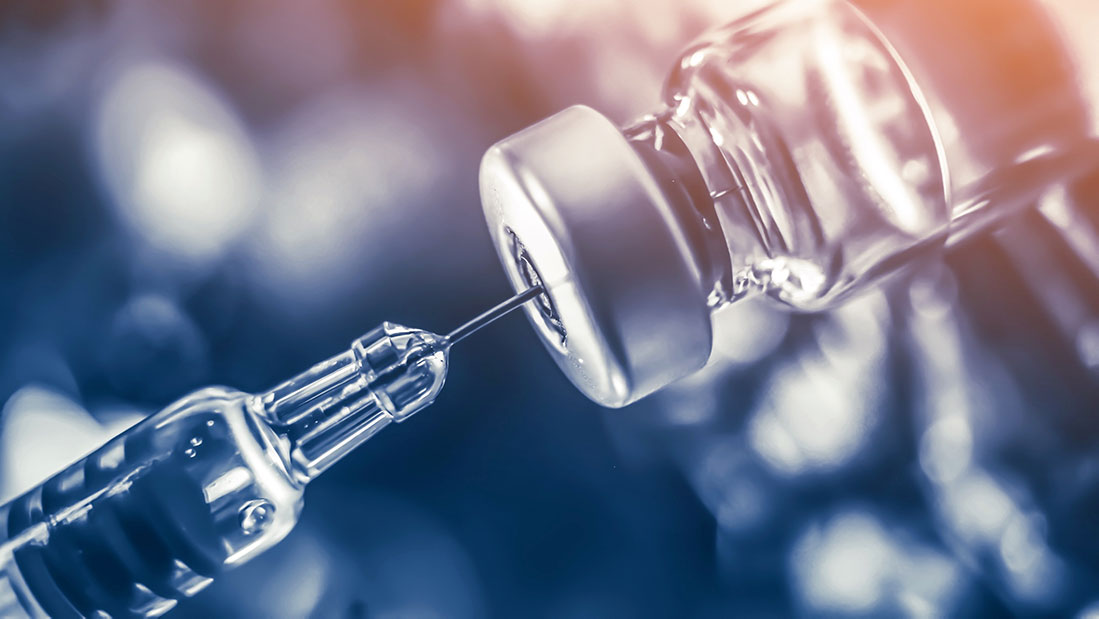
There are a wide variety of products available for the prevention of bacterial and viral infections associated with PRD. These products differ in the pathogens they contain, whether they are killed or modified live (for more information, visit our Vaccination Strategies and Herd Immunity section of the Antimicrobial Stewardship in the Ontario Beef Industry FAAST Review), their recommendations for storage and use etc. Your veterinarian is the expert and can help you decide what product is right for your farm, as well as how this product should be used. The Canadian Compendium of Veterinary Products has a Swine Biological Chart that outlines the variety of products available to aid in the prevention of some of the bacteria and viruses that cause PRD.
The PRD pathogens that should be considered in any herd vaccination program include:
- Porcine reproductive and respiratory syndrome (PRRS) virus
- Porcine circovirus 2 (PCV2)
- Swine influenza virus (SIV)
- Mycoplasma hyopneumoniae
Pathogen-Pathogen and Vaccine-Pathogen Interaction
One important principle to understand when implementing a vaccination protocol are the potential interactions between pathogens and vaccines. It is critical for you to understand the pathogen pressures present on your farm so that you can devise the vaccine protocol that sets your animals up for the best level of protection.
Porcine coronavirus 2 (PCV2), porcine reproductive and respiratory syndrome virus (PRRS), and Mycoplasma hyopneumoniae (MHYO) are important bugs associated with PRD. These various agents can interact in surprising and synergistic ways, such that co-infection can make the clinical picture worse than infection with each pathogen alone1.
Your veterinarian can help you design a science-informed vaccination protocol, based on your herd’s risk and pathogen profile
Herd Nutrition
Fighting off pathogens is an energetically expensive task for pigs (or any animal for that matter). That is why it is vitally important to provide a well-balanced diet, appropriate for the stage of production and environmental conditions of your animals. A properly formulated diet can also help pigs recover from illness, should it strike. What’s more, it’s equally important that all your animals can access and consume this ration without undue competition and stress.
Your nutritionist is there to make sure your ration is well balanced and suited to the needs of your herd.

Disease Monitoring and Herd Records
Monitoring and recording the level of disease in your herd is also an important component of every PRD control program. Routine record evaluations with your herd advisors will uncover any changes in the health status of your herd sooner. Further, as your veterinarian or other advisors are unable to be on your farm on a daily basis, accurate records provide a glimpse into the health and wellbeing of the animals in your herd over time. Accurate records also enable you to determine the effects of any change in management you’ve made.
The Pig Site has an excellent resource explaining The objectives for using records in swine production.
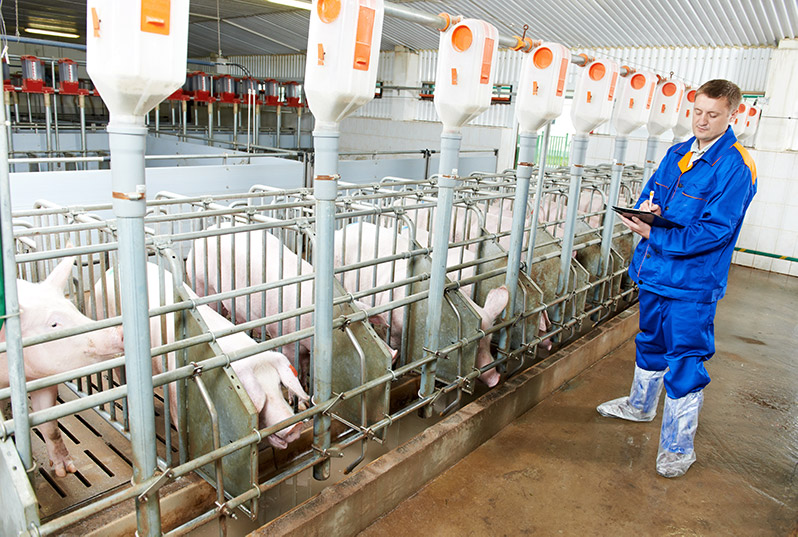
We sat down with Travis Jansen, a producer and researcher based in Seaforth,Ontario. Travis discusses his research on the economics of antimicrobial use with respect to Lawsonia intracellularis in swine production, as well as his involvement with the Ontario Pork Industry Council benchmarking project, looking at producer purchasing and use practices spanning several years
References
- Chae, C. 2016. Porcine respiratory disease complex: Interaction of vaccination and porcine circovirus type 2, porcine reproductive and respiratory syndrome virus, and Mycoplasma hyopneumoniae. Vet. J. 212:1–6. doi:10.1016/j.tvjl.2015.10.030.